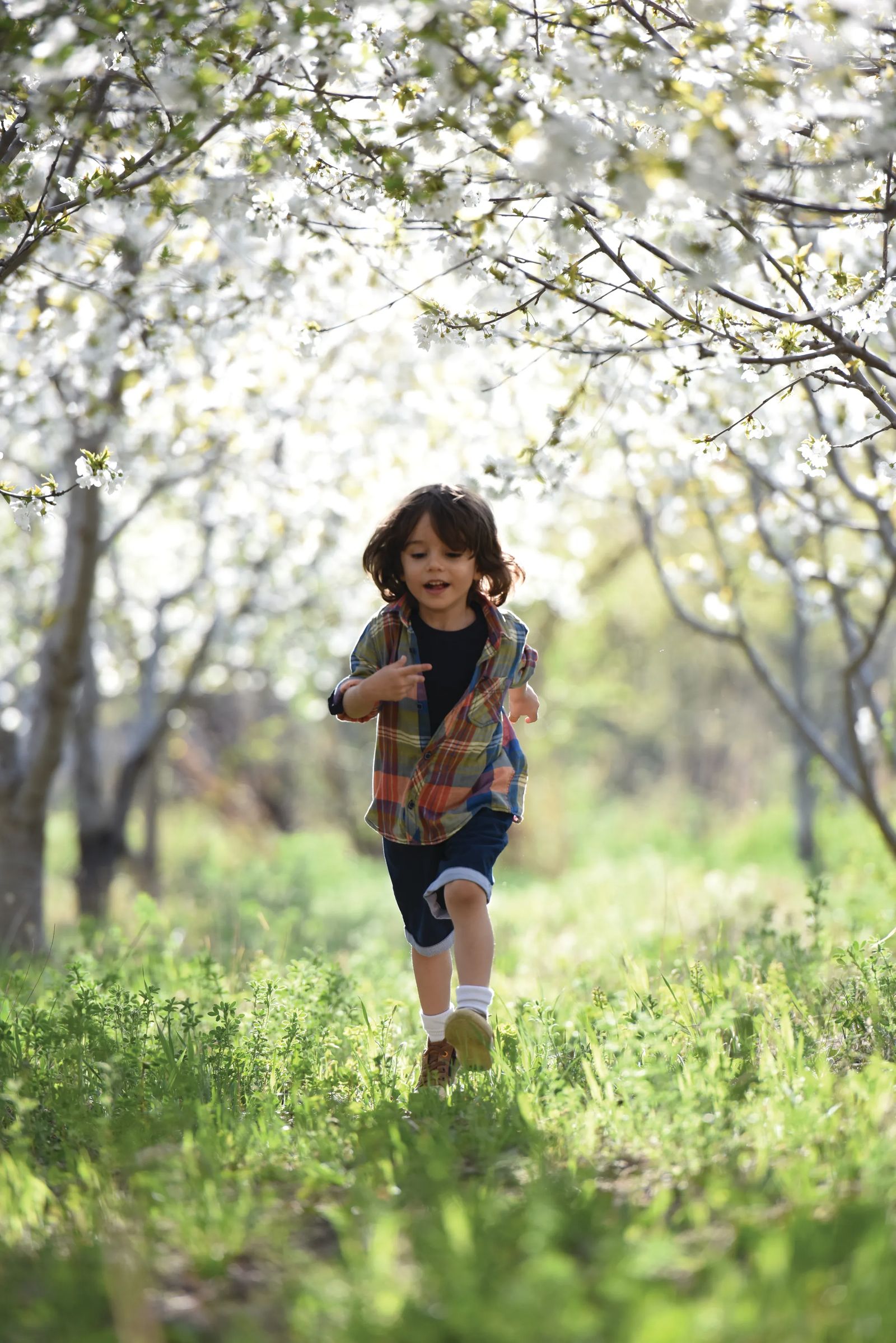
Born to Move
June 2020 | by jamie beeson
We are born to move. When my boys were in a very tight, extremely compact space nestled between my pelvis and my ribcage, they still found ways to somersault, stretch, kick, twirl, and hold solo dance parties. We document the milestones of rolling over, crawling, cruising, and walking with the anticipation of newfound freedoms and exploration. They come out built to learn and inclined to be active.
We share sentiments with other parents who are embarking on a new season when their previously contained child starts walking. Walking brings running, and running means seeing any open area as an opportunity to explore. We joke as we age and say things like, "I wish I had as much energy as my 5-year-old."
Kids have a different mode of operation. They tend to slow and notice things we skim over, take for granted, and miss, but they also go much more often. Case in point: I asked my boys to come up for lunch today, and they didn’t saunter, they sprinted up the stairs to make it to the table. While some days, I feel the same amount of excitement about eating, I don't sprint to the kitchen. When the kids are in the middle of playtime, and they suddenly get a brilliant idea, they jump up and skip, hop, and slide down the hallway to grab the key piece to fulfill their imaginations. And then they twirl, gallop, and skate their way back to their play space with vibrancy and vitality.
While we agree on this, in our culture, things are working against us, slowly conditioning that active nature out of us. According to a 2019 Common Sense Media report, by the age of 13, 83% of kids have their own phones. Another report by Influence Central put the average age for a child to get a cellphone at about 10. You and I both know how easy it is to get lost in time and space, scrolling through and engaging with phones longer than intended. Television used to be our screen time concern, but now nearly 98% of children live in a home with mobile devices AND TVs.
Children are sent to school as early as 2 years old, where they learn to sit and listen, and engage in an educational environment. Some preschools offer active learning settings, but there are plenty that don't. We send them to school for anywhere from 13-22 years, where a majority of the time, they are sitting to listen, learn, and apply.
We encourage kids to get involved in organized sports, which is a fantastic way to get active; however, some kiddos’ “movement intelligence” isn't inclined towards those organized sports that require higher levels of coordination. Organized sports don’t work for all children once they become competitive.
Busy lifestyles and stressed-out parents also lend to less activity happening at home or after school. As parents, we work long hours and take on a lot of responsibilities and commitments. We aren't sure when to fit activity in ourselves, let alone encourage more for the kids.
So if we are born to move, we know the importance of movement and the ramifications of inactivity, how can we easily encourage our families to be active? Easily is the word that I will emphasize. Parents often feel that we’re not cutting it or good enough in so many ways. My hope is not to create a sense of pressure to do more, rather to shift what you’re already doing - and what kids are already inclined to do - into being more active.
Let’s hit on what kids are already inclined to do and lean into it. Kids love games. They love to make up games, participate in, and learn new games. And let’s face it, making your job a game is much more fun (we learned that from Mary Poppins)!
Here are a few ideas to turn daily tasks and functions into a game:
- Have a step competition with your family for prizes decided on by the family. There are step counters especially made for kids!
- Allow kids to earn screen time by how many minutes they’re active.
- Do chores as different animals. Have kids hop from one room to another as a bunny or crawl on all fours like a dog.
- Instigate a family challenge and see how long you can sit on the wall, hold a plank, or balance on one foot.
Another way to instigate a lifestyle of activity in our homes is to shift what we already do into a more active version. Here are a few ideas to get you started.
- Park at the end of the parking lot and walk.
- Take the stairs by lunging up and squat stepping down sideways.
- Take the long way around instead of looking for shortcuts in stores.
- Give them a stability ball to sit on or a Bosu ball to stand on while doing homework. Challenge them to balance on one leg while reading their book. Or have them bounce on the ball ten times in between math problems.
As a parent of four boys, I always feel this call to encourage them to become everything they were born to be. Since they were born to move, I want to embrace the notion that helping them stay active is a big part of it. Kids start active; we need to make sure to create space for them to stay active.
Originally printed in the June 2020 issue of Simply Local Magazine
Never miss an issue, check out SLM's digital editions here!





